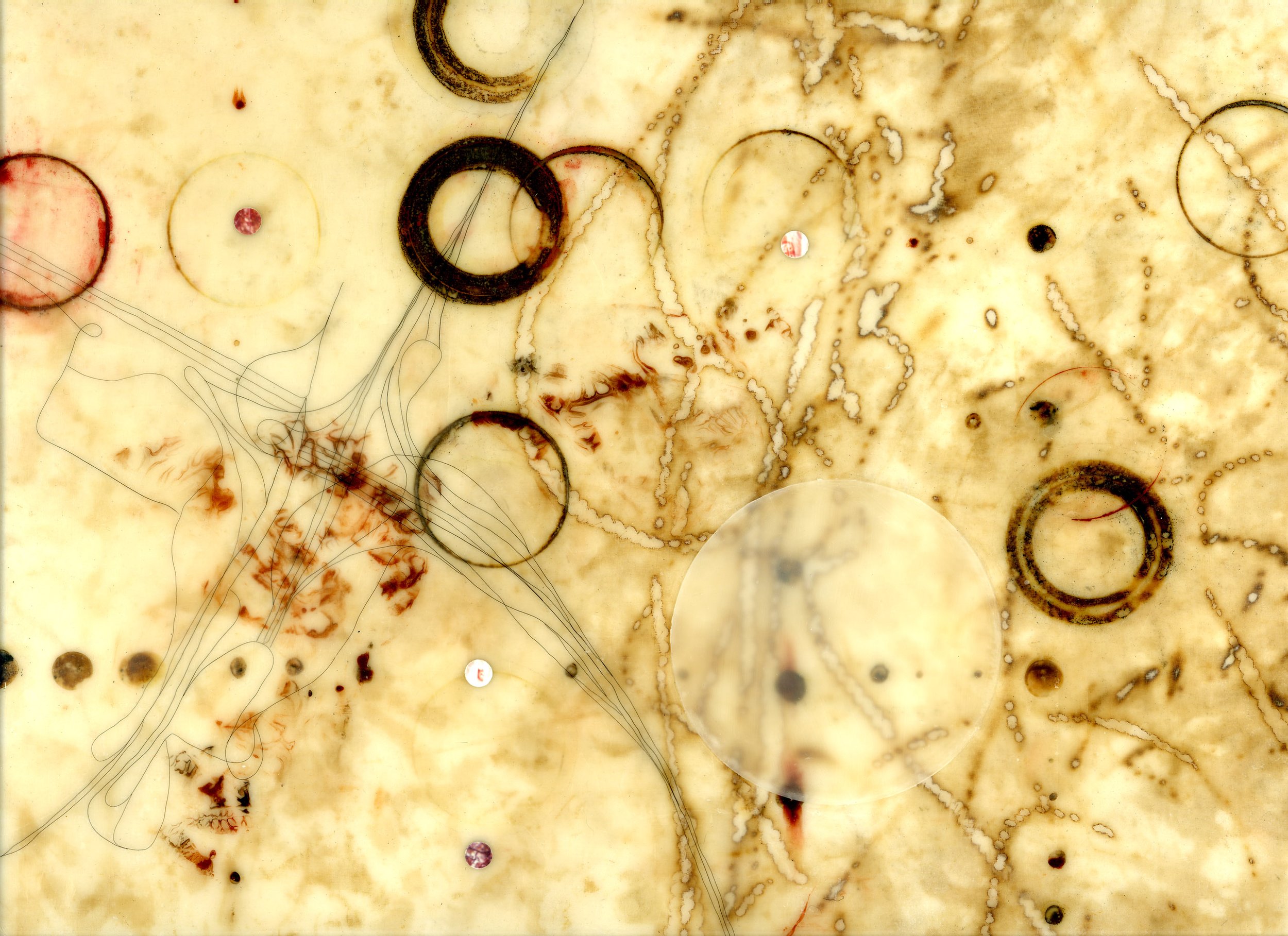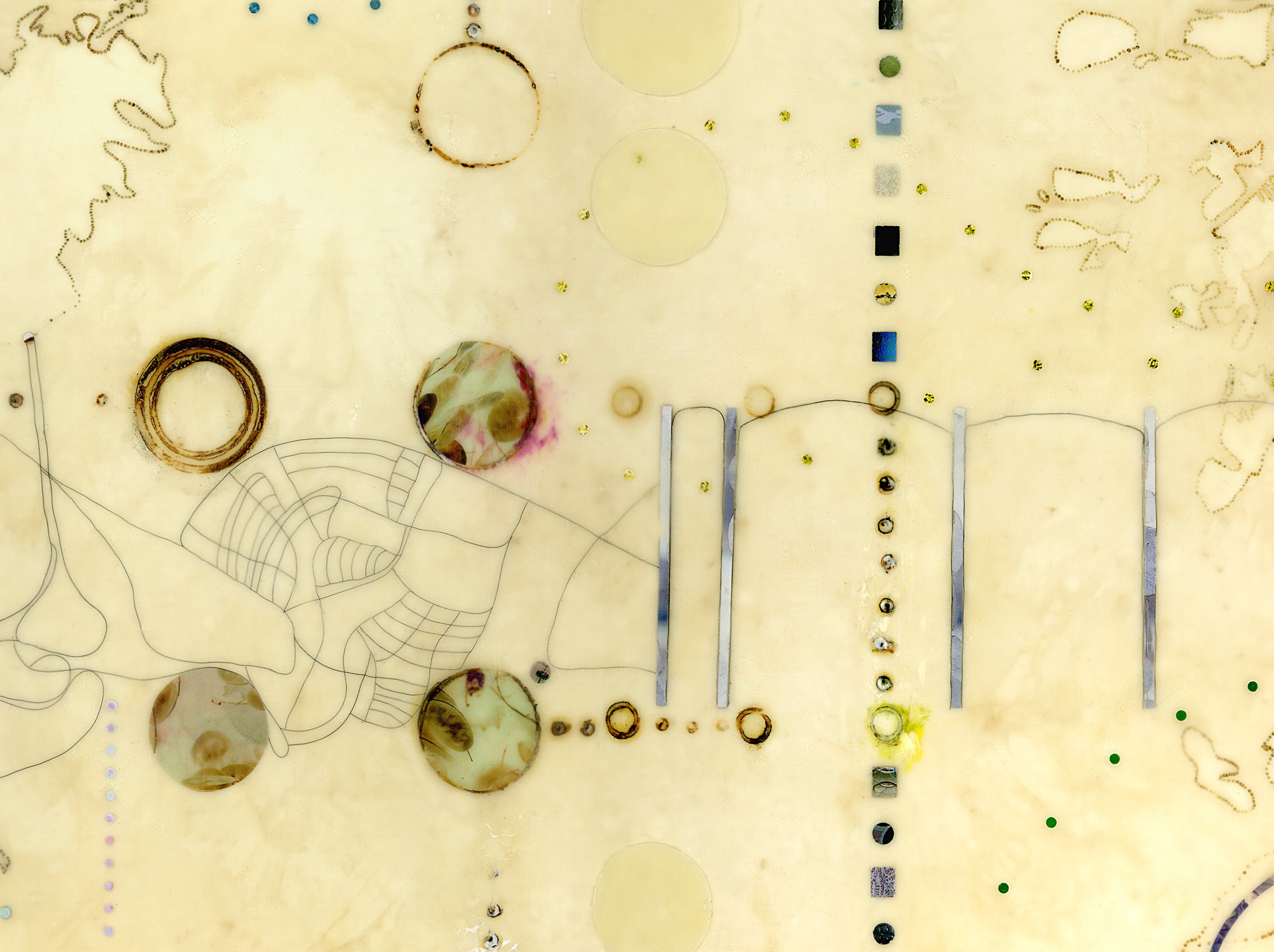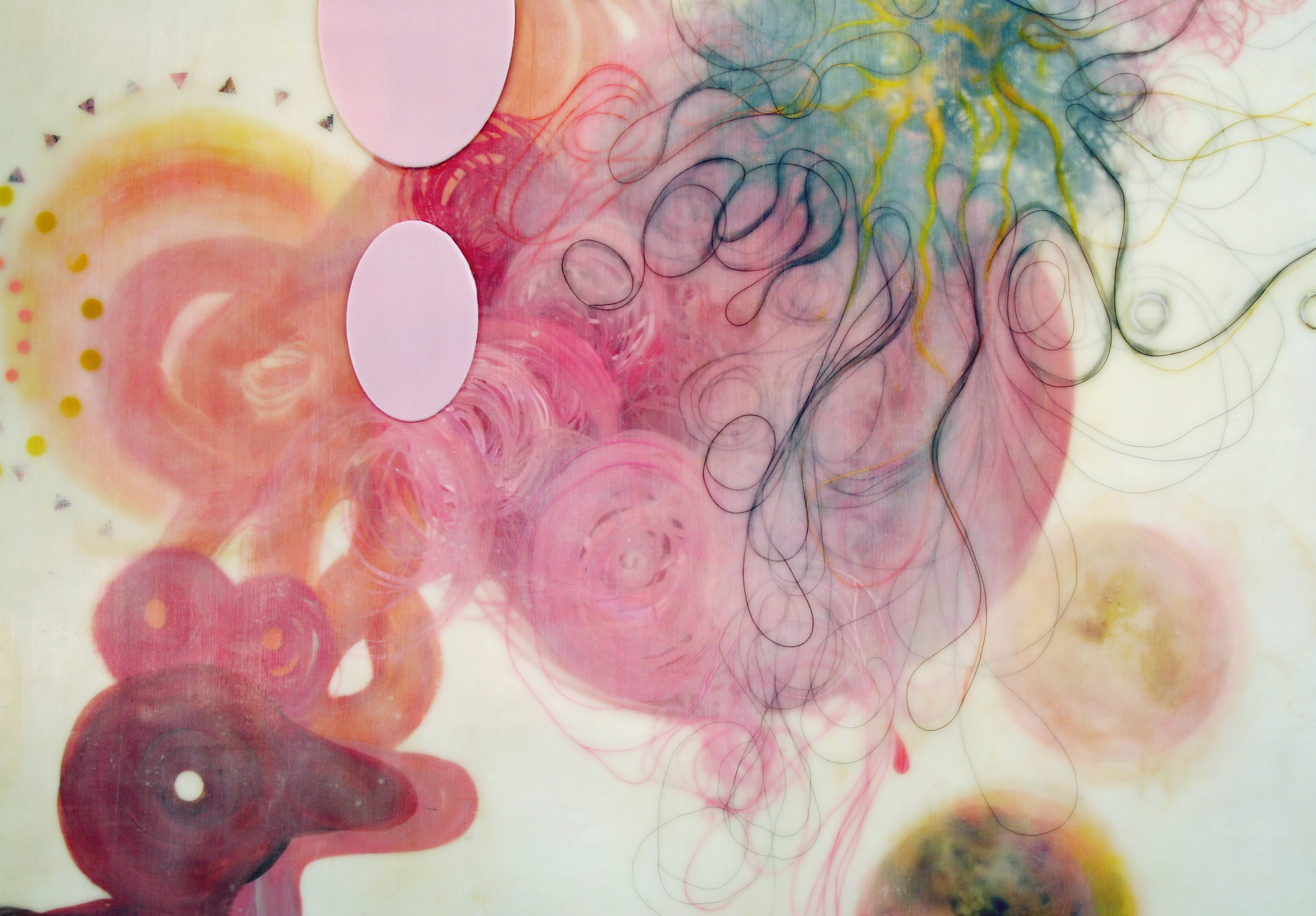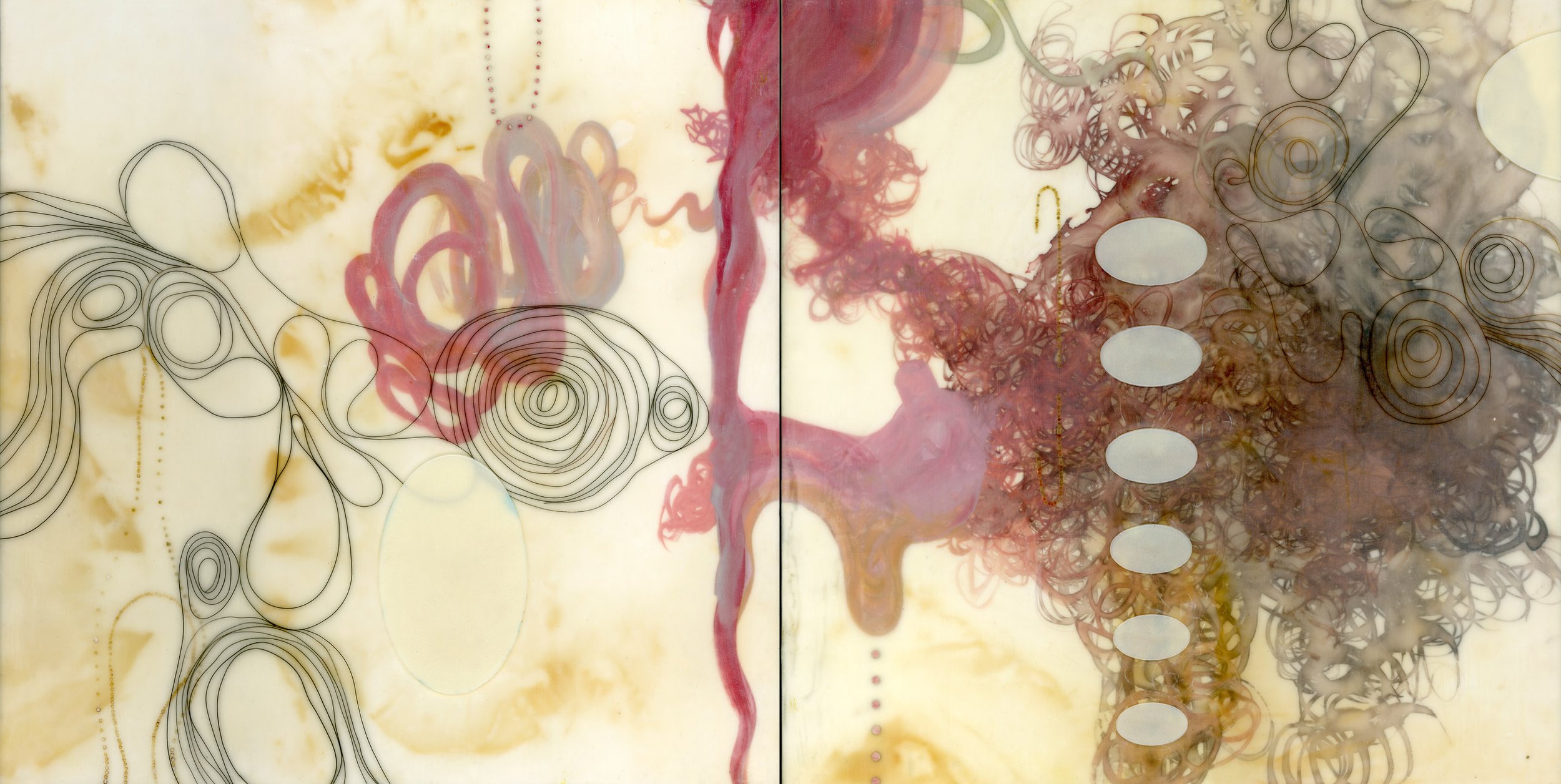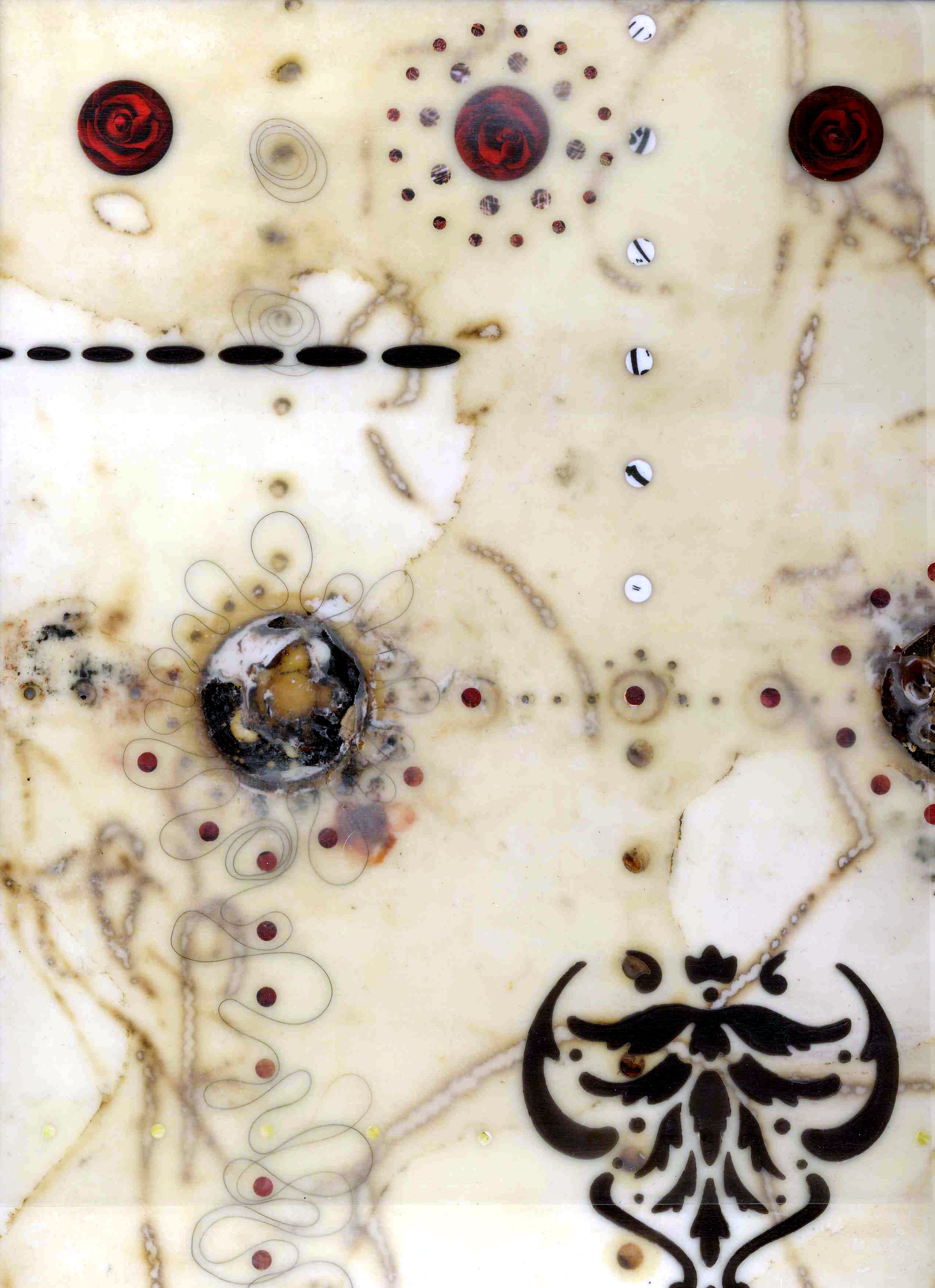Finding the Line: Why I Draw with Hair
This comical image of me attempting a selfie while standing along the wintery Hudson River, my hair a-tousle, as per the usual, is an excellent introduction to my horse hair drawing story.
For a long 5 years I had been searching the world for the perfect drawn line in encaustic; something thin, clean, that would flow from my hand like a pencil line. I had always been a doodler, I love to draw and was always frustrated by the line drawing techniques I found with encaustic. I tried it all-wire, thread, transfer papers, tracing paper transfers, oil pencils, incising and filling the wax-all were good, but I found something unsatisfactory about each. Some will wonder, so I will explain each technique and why it didn’t work for me. Let me preface by saying that there is nothing wrong with the following techniques, some people love them, they just didn’t work for my purposes.
Incising the wax was actually the first drawing technique I tried with encaustic and I so wanted it to work for me, but the line was always too thick, sometimes messy and not very fluid. This is simply because I wasn’t just drawing on wax, I was also carving-I was trying to do two things at once and found it impeding to the drawing process. Plus, there was the added step of filling with something else, either encaustic pigment or pigment sticks. The more steps in a process, the more mistakes can happen. If I had successfully incised the line, the filling and fusing of the fill created some kind of blurring, smearing or obliteration.
Thread didn’t work because once the wax is absorbed, the line is blurry. This is because thread is a spun fiber and has lots of little fibers coming off of it that aren’t always visible. The oil and heat from the wax absorb into the fibers causing them to open and spread, creating a line that looks blurry and undefined.
Wire was too difficult to manipulate and wouldn’t stay put, I didn’t stay long with this technique. Transfer papers are great and make a lovely line, I still use them for some things, however, working with them isn’t much like drawing because I couldn’t see what I was doing! Tracing paper transfers are also useful to me for some things, but not for drawing because I first had to draw the thing and then turn it upside down, redraw it and transfer it to the surface-kind of took the fun out of the drawing process. Oil based wax pencils are also amazing and I’ll cover some of them in the bonus section of this class. What I didn’t like about them is that unless they were super sharp, they made a thicker line than I wanted.
I continued experimenting with all of these techniques, never finding my true love drawn line in encaustic.
Turning our attention back to my always tousled, always out of place, hair. I remember when I was in fourth grade and got my hair cut in a ‘Dorothy Hamill” which was all the rage with the young ladies at the time. For me and my wavy, curly, sometimes frizzy hair, this haircut was a disaster and I do believe, is when all the trouble started-I could never get it right, no matter how much product and conditioner I used. But I digress…fast forward to my late thirties working on an encaustic painting and likely doing something detailed that prompted me to be very up close. I had turned away from what I was doing for a moment to grab my fusing iron and accidentally fused a stray piece of my hair that had fallen into the work…and there it was, the perfect line. Light, graceful, sinuous, all the things I had been looking for in a line. I knew my hair was good for something!
Once I had found this line, I began experimenting with other kinds of hair to created graduated effects. Coming from a textile background, I immediately thought of incorporating horse hair as it is a material widely used in Native American utilitarian craft as well as in contemporary weaving and fiber craft. Horse hair is also longer and easier to manipulate than human hair. Another bonus for me is that it’s a natural material, it comes from a live being and this is very important to me as it contributes to my content of natural life cycles as well as working seamlessly within the wax.
Since discovering the perfect drawn line in encaustic many moons ago, I have taught the basics of this technique in my encaustic workshops, but have not taught the advanced techniques I often experiment with in my own work. I’m now so excited to have all of the horsehair drawing techniques here in one place in my recently released Drawing with Horse Hair in Encaustic. This is a 10-lesson course, most of them lessons I never taught in my workshops and include working with human hair, simple and complex images, supply resources and more. If you’ve ever wondered about this technique, this is the course for you.
Please enjoy the gallery below, showing some of the work I’ve made over the years using horse and human hair in encaustic. If you’re looking for more hair art inspiration, I also offer a video presentation explaining a brief history of the use of hair in art, plus more images of my work. Enjoy!


